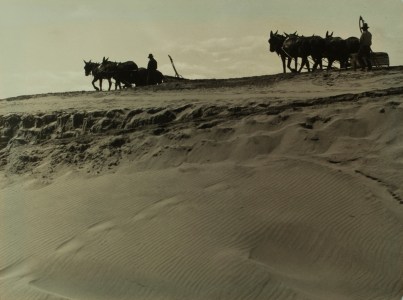
Photo by John Agcaoili.
JANM’s newest exhibition, Tatau: Marks of Polynesia, opens to the public on Saturday, July 30. Tatau explores Samoan tattoo practice through photographs that showcase the work of traditional tatau masters alongside more contemporary manifestations of the art form, highlighting the beauty of the Samoan tattoo tradition as well as its key role in the preservation and propagation of Samoan culture.
Our opening day celebration will begin at noon with a traditional Samoan ‘ava ceremony. To help us understand the nature of this ceremony, our summer Getty Multicultural Undergraduate Intern in exhibitions, Alyssa Melville, researched and wrote the following essay.
The ‘ava ceremony is an ancient Samoan ritual that is performed at the beginning of all important services and gatherings. Typically led by the high chief of the hosting village, the ceremony begins with words of welcome as the participants sit cross-legged on the floor in a circle or semicircle. The proceedings include the preparation and consumption of an ‘ava drink, which is usually followed by a feast.

The drink is made by mixing the ‘ava plant, also known as Piper methysticum, with water. This is done in a tānoa (bowl that stands on multiple legs) using a fau (strainer made from the bark of the fau, or Hibiscus tiliaceus, tree) as the stirring tool. The fau strains excess ‘ava from the water; it is then tossed over the right shoulder to a soga‘imiti (a male with a tatau), who shakes out any remaining ‘ava pieces before tossing it back. This continues until no more plant pieces remain in the tānoa. The drink is then served in an ipu tau ‘ava (half of a polished coconut shell) in an order that reflects the social rank of the guests being served.

The power of this ritual comes from its great care and attention to detail. Every move made is very deliberate, from the direction in which the ‘ava is stirred to the shoulder the fau is tossed over. Both the seating and the order of consumption of the ‘ava are dictated by the hosting high chief and are representative of the social hierarchy of Samoan society.
Just as the practice of tatau has migrated and evolved over the years, so has the ‘ava ceremony. Since Samoans rely on oral traditions to preserve their history and culture, small details of the ceremony have changed over time simply due to the retelling of the stories by different generations. As Samoan emigrants have settled around the world, the various diasporic communities have developed their own ceremonies based on different stories and retellings. Some have added a prayer at the end; others have altered the dress code to better suit contemporary society.
The central purpose of the ‘ava ceremony, however, remains the same: promoting unity and respect among groups.
Alyssa Melville majors in sociology/anthropology and business management at University of Redlands.

































































